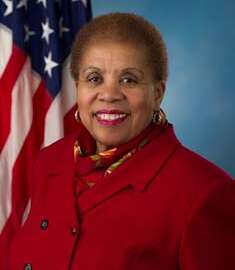
SSA adapts to more digital-savvy customers
The SSA is updating their online services with new programs and better security, but still faces budgetary and workforce attrition challenges.
Many young people who’ve stopped using Facebook point to the moment their grandparents signed up as the final straw. But there’s a digital platform that’s going after older users first, and expecting the younger to follow.
Carolyn Colvin, acting commissioner of the Social Security Administration, told the Federal Drive with Tom Temin that the My SSA program launched in 2013, but they’ve recently updated the service, and are encouraging as many Americans as possible to start using it. So far, only 23 million have signed up in the last three years.
Colvin said that My SSA offers a number of online services to members, such as the ability to get statements, either on their benefits or, if they don’t yet receive benefits, estimates based on their current earnings. These services offer the same information as the paper Social Security Statements, but now it’s available on demand and paperless.
Colvin also said that the SSA is rolling out a system where users can order replacement Social Security cards online. Due to significant security concerns, the program currently is only available in eight states, but Colvin said roughly half the country should have online access to the tool by the end of 2016, and nationwide by the end of 2017.
Users can apply for retirement and Medicare benefits on the website as well.
SSA beefed up its security measures as part of these updates, partnering with Equifax, the American Association of Motor Vehicle Administrators and other federal agencies in order to more accurately and safely verify personal information online. SSA also added personal security questions to its verification process.
But this move to digital doesn’t signal the end of field offices or personal attention at the SSA.
“I expect that we will always have offices because of the vulnerable populations that we serve,” Colvin said. “For anyone who is concerned about the field office going away, I don’t see that at all.”
Colvin said while SSA has looked into consolidating some of its field offices. In the end, some offices are relocating to serve higher concentration populations of individuals receiving Social Security benefits, while others are closing. One solution the SSA is considering is co-location — sharing space with other federal agencies.
SSA is facing other challenges in addition to consolidating its field presence. One of the biggest issues, Colvin said, is that their workforce is aging.
“I’ve given out a lot of 40 and 50-year pins this year for people who have provided services to the American public,” she said.
In order to solve this problem, Colvin said the SSA is developing programs to enhance employee engagement and development. But the issue goes deeper than simply finding qualified candidates.
“Our biggest challenge is having an adequate, sustained budget,” Colvin said. “We have 10,000 people per day turning 65-years of age or older, so our services are in even greater demand, and we must have a budget that allows us to replace these losses. When I was here in 1994, we had about 70,000 employees with certainly a much smaller workload. We now have 62,000 employees, so we are really going in the wrong direction.”
Colvin said that while an increased usage of IT has helped, it isn’t enough. It doesn’t replace employees, she said, just allows the rest to work smarter and more efficiently. And some things require the human touch, like the SSA’s backlog of cases, which is currently more than 1 million. Only administrative law judges are able to rule on those cases and clear the backlog.
“This is not something that happened overnight,” Colvin said. ““Over the years, we’ve had significant challenges around being able to hire an adequate number of [administrative law judges] to clear that backlog. We’re working very effectively now with OPM to help us in getting a register of very qualified individuals that we are able to hire. Last year we were only able to hire 70 because we did not have an adequate register. This year we’re looking at hiring about 250.”
Copyright © 2025 Federal News Network. All rights reserved. This website is not intended for users located within the European Economic Area.
Daisy Thornton is Federal News Network’s digital managing editor. In addition to her editing responsibilities, she covers federal management, workforce and technology issues. She is also the commentary editor; email her your letters to the editor and pitches for contributed bylines.
Follow @dthorntonWFED




